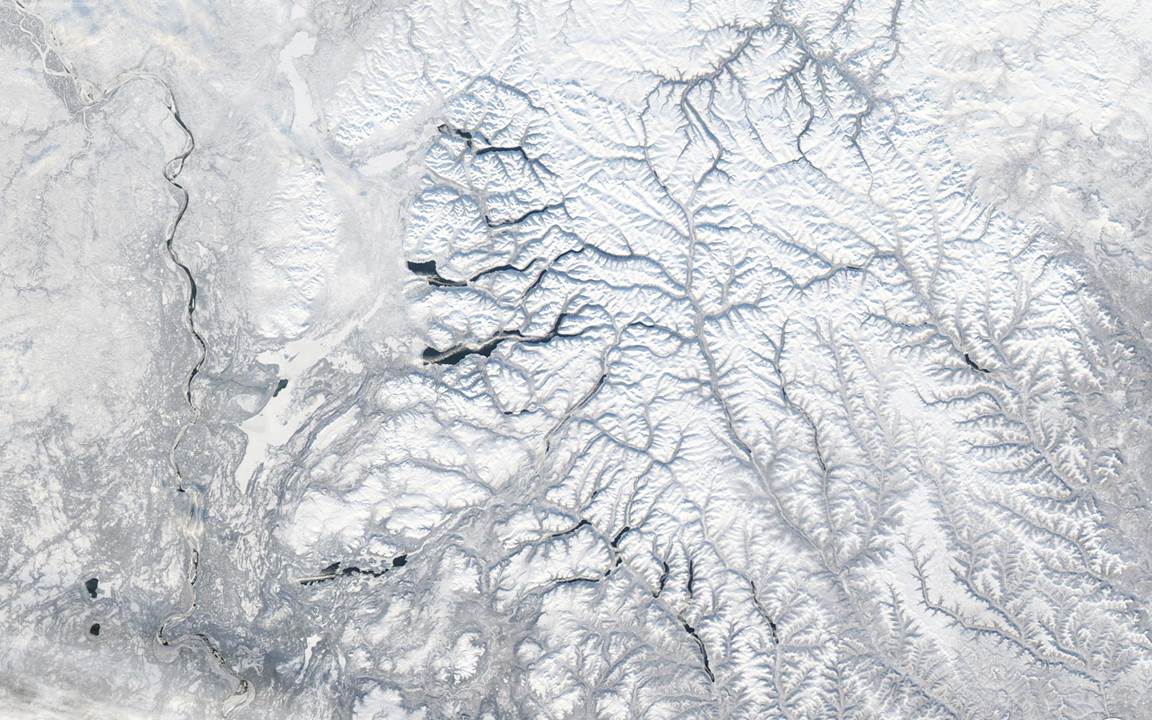Lying mostly north of the Arctic Circle, the Central Siberian Plateau is enjoying sunshine today, but in several weeks the sun will fall below the horizon (click for full-size):

Central Siberian Plateau as seen on 20 October 2014 by the MODIS instrument on NASA’s Aqua satellite.
Winter has gotten off to an early start in Russia, and many forecasters are calling for an unusually cold winter in the Northern Hemisphere. In the above image, lake-effect cloud streets can be seen to be streaming off a few of the larger lakes. According to the GFS forecast model, mid-day temperatures here are running below 0 deg. F.

 Home/Blog
Home/Blog



